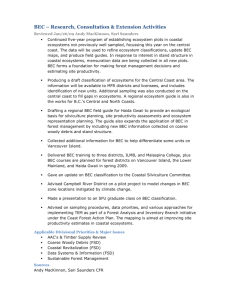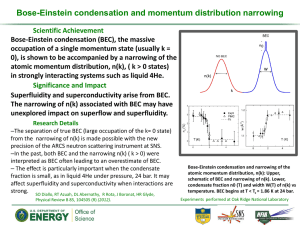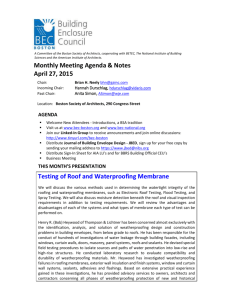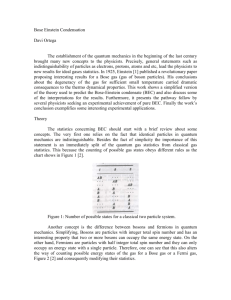BEC – Research & Extension Activities
advertisement
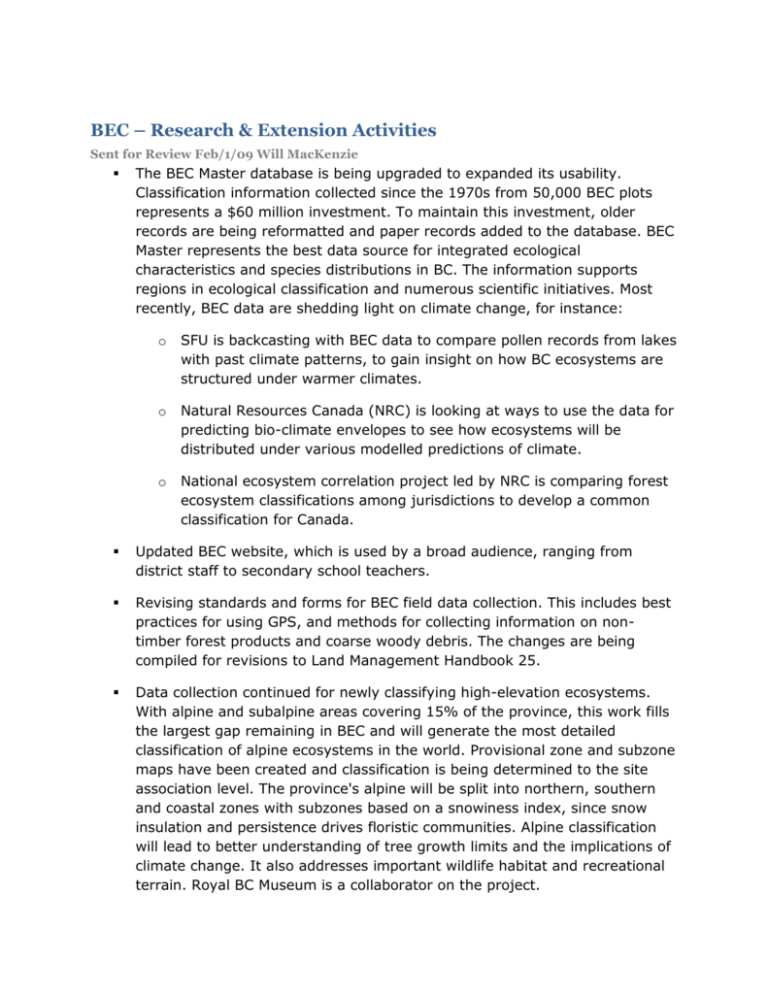
BEC – Research & Extension Activities Sent for Review Feb/1/09 Will MacKenzie The BEC Master database is being upgraded to expanded its usability. Classification information collected since the 1970s from 50,000 BEC plots represents a $60 million investment. To maintain this investment, older records are being reformatted and paper records added to the database. BEC Master represents the best data source for integrated ecological characteristics and species distributions in BC. The information supports regions in ecological classification and numerous scientific initiatives. Most recently, BEC data are shedding light on climate change, for instance: o SFU is backcasting with BEC data to compare pollen records from lakes with past climate patterns, to gain insight on how BC ecosystems are structured under warmer climates. o Natural Resources Canada (NRC) is looking at ways to use the data for predicting bio-climate envelopes to see how ecosystems will be distributed under various modelled predictions of climate. o National ecosystem correlation project led by NRC is comparing forest ecosystem classifications among jurisdictions to develop a common classification for Canada. Updated BEC website, which is used by a broad audience, ranging from district staff to secondary school teachers. Revising standards and forms for BEC field data collection. This includes best practices for using GPS, and methods for collecting information on nontimber forest products and coarse woody debris. The changes are being compiled for revisions to Land Management Handbook 25. Data collection continued for newly classifying high-elevation ecosystems. With alpine and subalpine areas covering 15% of the province, this work fills the largest gap remaining in BEC and will generate the most detailed classification of alpine ecosystems in the world. Provisional zone and subzone maps have been created and classification is being determined to the site association level. The province's alpine will be split into northern, southern and coastal zones with subzones based on a snowiness index, since snow insulation and persistence drives floristic communities. Alpine classification will lead to better understanding of tree growth limits and the implications of climate change. It also addresses important wildlife habitat and recreational terrain. Royal BC Museum is a collaborator on the project. Applicable Divisional Priorities & Major Issues Climate Change & Forest Carbon (FSD, OD) Coarse Woody Debris (FSD) Data Systems & Information (FSD) Nontimber Forest Products Sources Will MacKenzie Ecology – Research Activities Sent for Review Feb/1/09 Will MacKenzie Piloting classification of seral ecosystems with testing in the ICH and SBS zones. The work aims to determine the feasibility of identifying site potential based on early seral vegetation, rather than on mature stands. So far, results indications that a seral component that could readily be added to BEC. Among other things, it would assist with ecosystem recovery initiatives. In collaboration with Royal Roads University, investigating the ecological conditions conducive to producing high-quality plants of interest to First Nations. The project is being conducted in Burns Lake, in partnership with Burns Lake Community Forest, on the Queen Charlotte Islands, in partnership with Haida Guardians, and near Williams Lake (see Coupé). An inventory of highly productive site ecological conditions will be generated and mapped using TEM or PEM. Research is being conducted in response to Haida First Nation concerns that introduced deer are obliterating valued traditional plants on the Queen Charlotte Islands. For instance, devil's club is of high cultural value but as been all but extirpated by deer browsing. In collaboration with Royal Roads and Haida Guardians, the abundance of vegetation in similar ecosystems on the Islands and mainland is being compared. This work will enable identifying the sites on the Queen Charlottes that have the greatest potential for producing traditional plants once deer are excluded. Applicable Divisional Priorities & Major Issues First Nations (OD) Nontimber Forest Products Second Growth Management Sustainable Forest Management Sources Will MacKenzie
